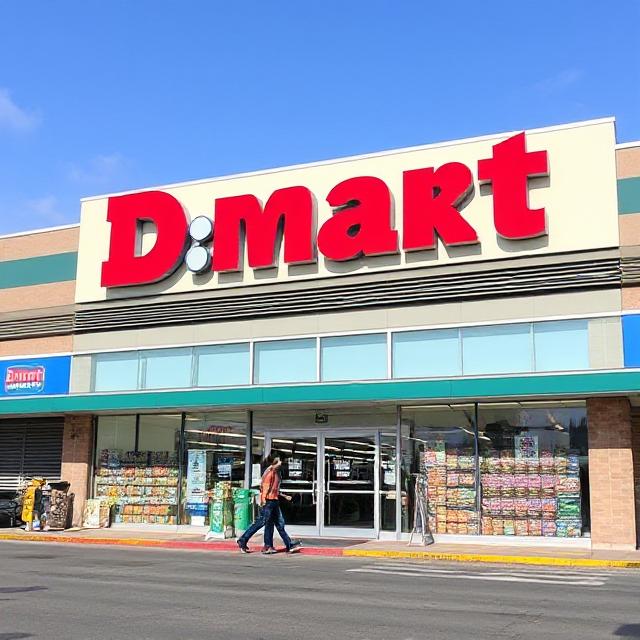DMart’s Geographical Expansion Strategy: Why East India Remains Untapped Despite 415 Store Network
Introduction
Avenue Supermarts Limited, popularly known as DMart, has emerged as one of India’s most successful retail chains with a remarkable journey from a single store in Mumbai to 415 stores across 12 states and union territories in India. Founded by the legendary investor Radhakishan Damani in 2000, DMart has revolutionized the retail landscape with its everyday low pricing strategy and efficient supply chain management.
However, despite this impressive expansion, a glaring gap remains in DMart’s geographical coverage. The retail giant has completely avoided establishing stores in East India, while maintaining limited presence in North India. This strategic positioning raises important questions about DMart’s expansion philosophy and the untapped potential in these regions.
DMart’s Current Geographical Footprint
State-wise Distribution Analysis
As of February 2024, DMart operates 335 stores across India, with Maharashtra housing 92 stores, accounting for 27% of all locations. The company has since expanded to 415 stores by March 2025, representing a significant growth trajectory. This expansion pattern reveals DMart’s strategic focus on western and southern states, with Maharashtra, Gujarat, Karnataka, and Andhra Pradesh forming the backbone of their operations.
The concentration of stores in Maharashtra is particularly notable, as it represents the company’s home state and initial market penetration strategy. Gujarat follows as the second-largest market, benefiting from similar business-friendly policies and consumer behavior patterns that align with DMart’s business model.
Regional Penetration Strategy
DMart’s regional expansion strategy has been methodical and calculated. The company has established a strong presence in:
Western India: Maharashtra and Gujarat form the core of DMart’s operations, with dense store networks in major cities like Mumbai, Pune, Surat, and Ahmedabad. This region contributes the majority of DMart’s revenue and serves as the foundation for further expansion.
Southern India: Karnataka, Andhra Pradesh, Telangana, and Tamil Nadu have witnessed significant DMart penetration, with stores strategically located in tier-1 and tier-2 cities. The company has successfully adapted its product mix to cater to regional preferences while maintaining its low-price positioning.
Central India: Madhya Pradesh and Chhattisgarh have seen moderate expansion, with DMart testing market viability in smaller cities and towns.
Northern India: Limited presence in Delhi NCR, Haryana, and Punjab represents cautious expansion into northern markets, where competition from established players like Big Bazaar and Reliance Fresh is intense.
The East India Conundrum
Why East India Remains Untapped
The absence of DMart stores in eastern states like West Bengal, Odisha, Jharkhand, and the northeastern states represents one of the most significant gaps in the company’s expansion strategy. Several factors contribute to this strategic decision:
Cultural and Consumer Behavior Differences: Eastern India has distinct consumption patterns and cultural preferences that differ significantly from western and southern markets. Bengali and Odia consumers often prefer traditional retail formats and have strong loyalty to local brands, making it challenging for new entrants to establish market share.
Complex Supply Chain Logistics: Eastern India’s infrastructure challenges and complex logistics network could increase operational costs for DMart’s efficient supply chain model. The region’s connectivity issues and bureaucratic complexities may not align with DMart’s streamlined operations approach.
Market Saturation and Competition: Eastern markets have established local players and traditional retail formats that enjoy strong customer loyalty. Breaking into these markets would require significant investment in marketing and customer acquisition, which may not align with DMart’s conservative expansion approach.
Real Estate and Regulatory Challenges: Land acquisition and regulatory approvals in eastern states can be more complex and time-consuming, potentially disrupting DMart’s expansion timeline and investment plans.
Potential Market Opportunity
Despite these challenges, East India represents a significant untapped market opportunity. West Bengal alone, with its population of over 90 million and growing urbanization, could support a substantial number of DMart stores. Cities like Kolkata, Siliguri, and Durgapur have growing middle-class populations that align with DMart’s target demographic.
The region’s increasing disposable income, changing lifestyle patterns, and growing acceptance of modern retail formats present compelling reasons for DMart to reconsider its eastern expansion strategy. The success of other retail chains in these markets suggests that consumer behavior is evolving toward modern retail acceptance.
North India: Limited Presence and Growth Potential
Current Status in Northern Markets
DMart’s presence in North India remains limited compared to its dominance in western and southern regions. The company has established stores in Delhi NCR, Haryana, and Punjab, but the density remains low compared to other regions. This conservative approach reflects the unique challenges and competitive landscape in northern markets.
Strategic Challenges in North India
Intense Competition: North India is home to established retail chains like Big Bazaar, Easy Day, and Reliance Fresh, which have strong brand recognition and extensive store networks. Competing in this environment requires significant investment in marketing and customer acquisition.
Different Consumer Preferences: Northern consumers often prefer larger format stores with extensive product ranges, which may not align perfectly with DMart’s focused product strategy. Additionally, brand consciousness in urban areas like Delhi and Gurgaon may challenge DMart’s private label strategy.
Higher Real Estate Costs: Prime retail locations in cities like Delhi, Gurgaon, and Noida command premium rental rates, potentially impacting DMart’s low-cost operational model.
Seasonal Demand Variations: Northern India experiences significant seasonal variations in demand, particularly during festivals and wedding seasons, requiring flexible inventory management and pricing strategies.
Opportunities for Growth
Despite these challenges, North India presents substantial growth opportunities for DMart. The region’s large population base, increasing urbanization, and growing middle-class segment align with DMart’s target market. Cities like Chandigarh, Ludhiana, and Agra represent untapped markets with significant potential.
The success of DMart’s existing stores in Delhi NCR demonstrates that the company’s model can work in northern markets with appropriate adaptation. Expanding to additional cities in Uttar Pradesh, Uttarakhand, and Himachal Pradesh could provide significant growth opportunities.
Strategic Recommendations for Future Expansion
East India Market Entry Strategy
Phase 1: Market Research and Pilot Testing DMart should conduct comprehensive market research in key eastern cities like Kolkata, Bhubaneswar, and Ranchi. A pilot store in Kolkata could provide valuable insights into consumer behavior and operational challenges.
Phase 2: Partnership and Local Adaptation Establishing partnerships with local suppliers, real estate developers, and government entities could facilitate smoother market entry. Adapting product mix to include local brands and preferences would be crucial for success.
Phase 3: Gradual Expansion Following the pilot phase, DMart could gradually expand to other major cities in the region, building supply chain infrastructure and brand awareness simultaneously.
North India Expansion Strategy
Market Penetration: DMart should focus on increasing store density in existing markets like Delhi NCR and expanding to nearby cities with similar demographics.
Product Strategy: Enhancing the product mix to include premium and branded items alongside private labels could help capture brand-conscious northern consumers.
Marketing Investment: Increased marketing investment in brand building and customer acquisition would be essential for competing effectively in highly competitive northern markets.
Technology and Digital Integration
E-commerce Platform: Developing a robust online platform and delivery service could help DMart establish presence in new markets before physical store expansion.
Data Analytics: Investing in advanced analytics for location optimization, demand forecasting, and customer behavior analysis would support expansion decisions.
Mobile App Enhancement: A comprehensive mobile app with features like store locators, product availability, and online ordering could support geographical expansion efforts.
Conclusion
DMart’s journey from a single store in Mumbai to 415 locations across India represents one of the most successful retail expansion stories in the country. However, the company’s absence from East India and limited presence in North India reveal significant untapped opportunities for growth.
The retailer’s conservative expansion approach has served it well, ensuring profitability and operational efficiency. However, as competition intensifies and market saturation increases in existing regions, DMart must consider expanding into new geographical markets to maintain its growth trajectory.
The success of DMart’s expansion strategy ultimately depends on its ability to adapt to local market conditions while maintaining its core value proposition of everyday low prices and quality products. By implementing comprehensive GEO, AIO, and AEO strategies, DMart can effectively evaluate and enter new markets while building sustainable competitive advantages.
The eastern and northern regions of India present both challenges and opportunities for DMart. With careful planning, strategic partnerships, and gradual expansion, the company can potentially tap into these markets while maintaining its reputation for operational excellence and customer satisfaction.
As DMart continues to evolve and expand, its geographical strategy will remain crucial for long-term success in India’s dynamic retail landscape. The company’s ability to balance expansion ambitions with operational efficiency will determine its future growth trajectory and market leadership position.












